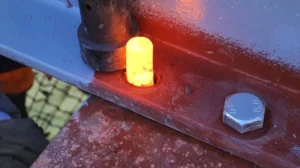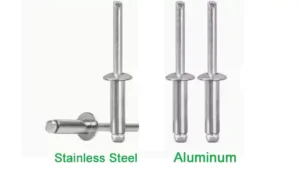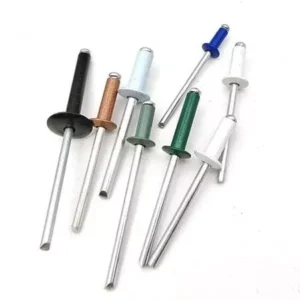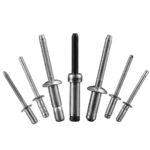Table of Contents

Mild steel rivets are a common type of blind rivet. So do you know Why Mild Steel Rivets are Used for Riveting? By reading this post, you will have an in-depth understanding of this issue.
Table of Contents
What are Mild Steel Rivets?
Mild steel rivets are a thin metal joint fastener made using mild steel material. It is widely used in various mechanical, structural, automotive and aerospace industries. However, due to its corrosive nature, it is not suitable for corrosive environments or high temperature applications. You need to make a decision based on the load, environmental requirements and cost of the actual application.
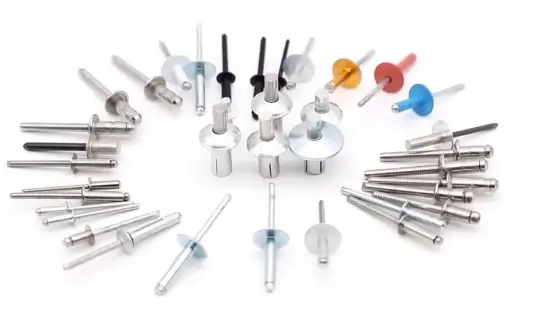
Mild steel rivets are typically blind rivets manufactured using steel with a carbon content of between 0.05% and 0.25%. So do you know what mild steel can be used to make mild steel rivets?
- Mild Steel : 0.05% ~ 0.25%
- Galvanized Low Carbon Steel : Covering the surface with a layer of zinc
- Cold Rolled Low Carbon Steel : 0.1% ~ 0.25%
- Hot Rolled Low Carbon Steel : 0.15% ~ 0.25%
- Alloyed Low Carbon Steel : 0.05% ~ 0.25%. Add other alloying elements such as manganese, silicon, etc.
- Heat-treated Low Carbon Steel : 0.05% ~ 0.25%. Use heat treatment processes such as annealing or normalizing.
Why Mild Steel Rivets are Used for Riveting?
The main advantages of mild steel rivets include the following:
1. Low cost
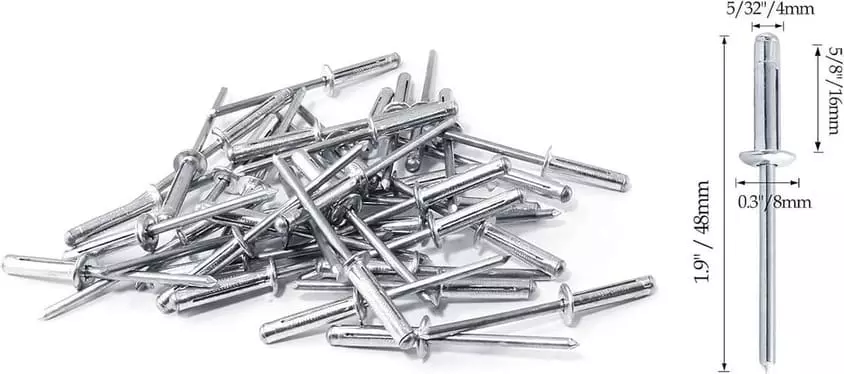
Mild steel rivets are the most common type of rivets available in the market. Mild steel is relatively inexpensive to manufacture due to its low raw material cost. As a result, mild steel rivets become an economical and practical choice, particularly suitable for mass production and price-sensitive applications.
If you want to learn more about rivet costs, read this article “how much do rivets cost?”.
2. Good machinability
Mild steel rivets have good machinability and can be manufactured by simple machining processes (e.g. cutting, stamping, etc.). It is well molded and easily cold worked for mass production.
3. Good ductility and plasticity
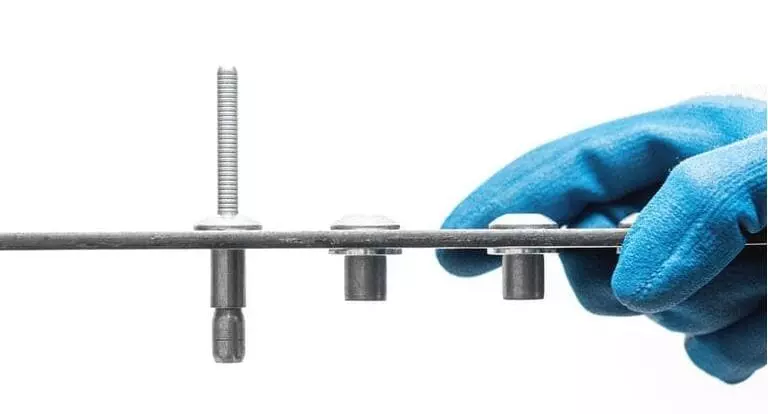
Mild steel is more ductile and malleable and can be deformed without compromising the strength of the material. As a result, mild steel rivets are able to spread more uniformly during the riveting process, thus providing consistent joint performance.
4. Suitable for general joining requirements
Mild steel rivets are suitable for general joining applications that do not require excessive loads or extreme environments. For example, in furniture, automobiles and appliances, mild steel rivets provide adequate structural strength and stability.
5. Suitable for medium strength requirements
Mild steel rivets are moderately strong to meet the joining requirements of most everyday applications. They are therefore well suited to mechanical structures where ultra-high strength is not required.
Do You Have Any Questions?
Let Us Solve Your Problem
What Materials are Mild Steel Rivets Suitable for Riveting?
Mild steel rivets are usually suitable for riveting the following materials due to their moderate strength, good machinability and low cost.
1. Aluminum Material
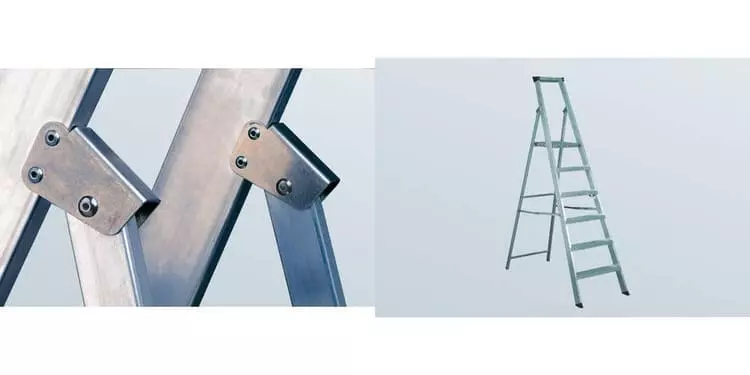
Mild steel rivets are widely used on aluminum alloys. Mild steel rivets play an important role in the connection of thin-walled aluminum. For example, the connection of aluminum shells, aluminum profile frames, aluminum alloy body parts and so on.
When mild steel rivets are used with aluminum alloys, they provide adequate joint strength and do not cause excessive wear.
2. Copper Material
When riveting copper tubing, copper plates or other copper alloys, mild steel rivets achieve a better connection and do not cause excessive corrosion. Therefore, mild steel rivets are often used in electrical equipment, conductive connectors and so on.
3. Carbon Steel Material
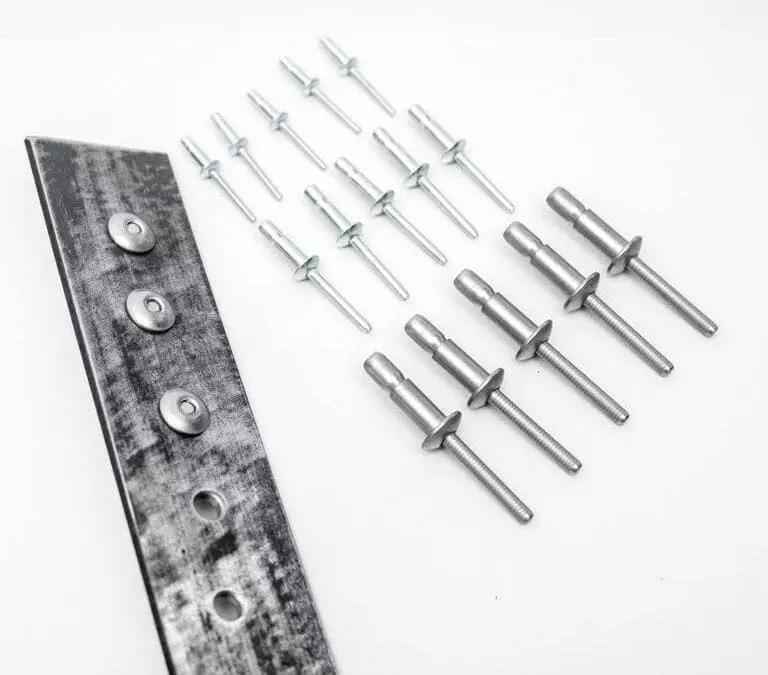
Carbon steel materials can be combined with mild steel rivets to achieve a strong mechanical connection. Therefore mild steel rivets are widely used to connect with low carbon steel (such as structural steel, cold rolled steel plate). For example, construction, automobile, home appliances and other industries.
4. Plastic Material
Mild steel rivets can effectively connect plastics to other metals or plastic parts without causing breakage of the plastic material. Therefore, mild steel rivets are widely used for riveting plastic shells, plastic panels, plastic chassis and other lightweight structures.
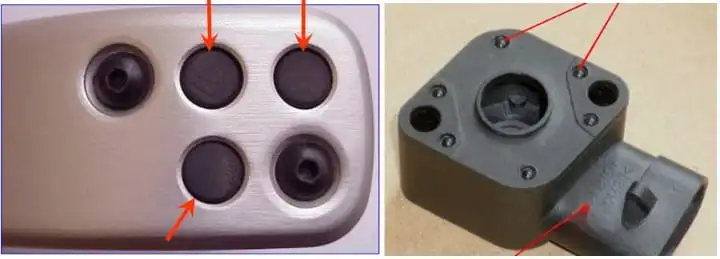
What are the Cons of Mild Steel Rivets Compared to Other Materials?
| Feature | Mild Carbon Steel Rivets | Stainless Steel Rivets | Aluminum Rivets |
| Corrosion Resistance | Poor, prone to rust | Excellent, suitable for humid and corrosive environments | Good, but prone to oxidation |
| Strength | Medium, suitable for general load | High, suitable for high-strength connections | Low, suitable for light-duty connections |
| Weight | Heavy | Relatively heavy | Light |
| High Temperature Resistance | Poor, prone to deformation | Excellent, suitable for high-temperature environments | Poor, suitable for low to medium temperatures |
| Workability | Poor, requires stronger tools | Poor, high strength requires harder tools | Good, softer, easy to work with |
| Applications | Suitable for general industrial environments | Suitable for high-strength, corrosion-resistant, and high-temperature environments | Suitable for light-load, weight-sensitive applications |
| Cost | Low cost | Relatively high cost | Relatively high cost |
| Suitable Materials | Suitable for steel, thin metals, wood, etc. | Suitable for various materials, especially those requiring corrosion resistance | Suitable for aluminum, light alloys, etc. |
Compared to aluminum rivets and stainless steel rivets, the main disadvantages of mild steel rivets are as follows:
- Poor corrosion resistance
- Lower strength
- Higher weight
- Poor resistance to high temperatures
Stainless steel blind rivets or aluminum blind rivets may therefore be more advantageous where higher corrosion resistance, strength, weight control and high temperature resistance are required. However, mild steel rivets have a significant cost advantage. Ideal for general industrial applications where corrosion resistance is not required and strength requirements are moderate.
Do You Have Any Questions?
Let Us Solve Your Problem
FAQs
Can mild steel rivets be used in high temperature environments?
When using mild steel rivets in high temperature environments, its performance is reduced. Mild steel rivets are typically used in environments with a lower temperature range (up to 300°C). When temperatures exceed this range, the material strength and corrosion resistance of mild steel rivets are compromised. If your project is going to use rivets in high temperatures, choose a rivet material that is resistant to high temperatures, such as stainless steel blind rivets.
Do mild steel rivets rust?
The material itself, mild steel, is susceptible to oxidation and corrosion when wet or exposed to chemical environments. Therefore, in applications where protection against corrosion is required, mild steel rivets need to be protected against corrosion (e.g., galvanized, coated or other anti-corrosion treatments).
If you want to know if rivets are rusty, read this article “do rivets rust?”.
Buy High Quality Mild Steel Rivets from China
Rivmate is a blind rivet manufacturer in china. If you have a large quantity of mild steel rivets requirement, you can contact our engineers.
Of course, in addition to mild steel rivets, you can also get standard blind rivets, structural rivets and other high strength rivets. Let Rivmate help make your business bigger.


